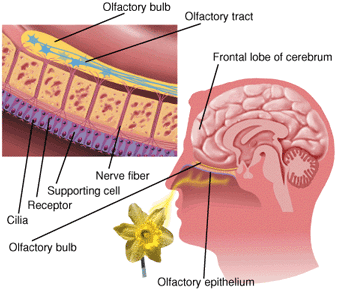Olfactory pathways
The sense of smell is much less necessary than vision, audition or the somatic senses, and will therefore receive less emphasis in this course. Though, as olfactory dysfunction can be a significant diagnostic sign, it is significant to have at least a rudimentary knowledge of the olfactory pathways.
The olfactory system is the sensory system used for olfaction, or the sense of smell. Most of the mammals and reptiles have two distinct sections to their olfactory system: a main olfactory system and an accessory olfactory system. The chief olfactory system detects airborne substances, volatile, whereas the accessory olfactory system senses fluid-phase stimuli. The behavioral evidence signifies that most frequently, the stimuli detected by the accessory olfactory system are pheromones.

The olfactory system is frequently spoken of along with the gustatory system as the chemosensory senses as both transduce chemical signals into perception.The mechanism of the olfactory system can be subdivided into a peripheral one, sensing an external stimulus and encoding it as an electric signal in neurons, and a central one, where all signals are processed and integrated in the central nervous system.